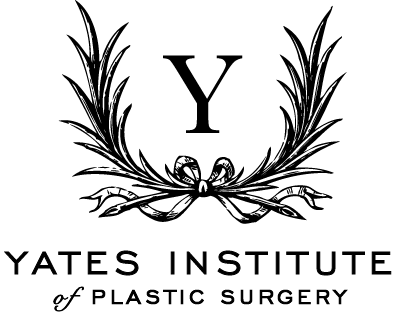Common Problems after Breast Reduction Surgery and How to Avoid Them
Breast Reduction Complications – Causes and Treatment
Have you ever found yourself constantly adjusting your bra straps, dealing with back pain, or feeling self-conscious about the size of your breasts? If so, you're not alone. Many women with overly large breasts face these challenges daily, which is why breast reduction surgery has become a popular solution. But when considering plastic surgery to reduce the size of the breasts, it’s important to be aware of the potential problems that can arise after surgery and how to minimize the risk of complications.
What to Expect During Breast Reduction Recovery
After breast reduction surgery, there are some normal occurrences and side effects that are associated with the recovery period. These include:
Swelling: Swelling is a common and expected side effect of breast reduction surgery. The breasts may appear larger and feel firmer than desired due to swelling, which can take several weeks or even months to fully subside.
Bruising: Bruising around the breasts and surgical sites is normal and usually resolves within a few weeks after surgery.
Pain and discomfort: It is normal to experience pain and discomfort after breast reduction surgery, particularly in the first few days following the procedure. Pain can usually be managed with prescribed pain medication.
Numbness: Some degree of numbness or changes in nipple sensation is common after breast reduction surgery. This is usually temporary, but in some cases, it may be permanent.
Itching: As the incisions heal, itching may occur, which is a normal part of the healing process. You should avoid scratching the incisions to prevent infection and promote proper healing.
Fatigue: Feeling tired and fatigued is normal after surgery, and it may take several weeks to regain your normal energy levels.
Complications That Can Occur after Breast Reduction Surgery
Here are some potential complications that can occur after breast reduction, why they occur and how to prevent them:
Infection
Infection is one of the most common and potentially serious complications that can occur after breast reduction surgery. The risk of infection is relatively low when the procedure is performed by a skilled and experienced surgeon, but you should be aware of the signs and symptoms of infection and take steps to prevent it from occurring.
Infections happen when bacteria enter the surgical site, either during the procedure or in the days and weeks following surgery. The most common types of bacteria that cause infections after breast reduction surgery include:
Staphylococcus aureus (staph)
Streptococcus (strep)
The symptoms of infection after breast reduction surgery can vary, but typically include:
Redness and swelling around the incision sites
Pain and tenderness that worsens over time
Warmth or heat around the incision sites
Discharge from the incisions, which may be thick, colored, or foul-smelling
Fever and chills
Fatigue and weakness
To minimize the risk of infection, make sure to:
Follow proper wound care and hygiene practices
Wash your hands before and after changing dressings
Take any prescribed antibiotics as directed
Avoid touching or scratching your incisions
Wear loose, comfortable clothing
Avoid swimming pools, hot tubs, and baths
If you do develop an infection after your breast reduction surgery, prompt treatment is essential for preventing it from spreading and causing more serious complications. Treatment can involve a combination of:
Oral or intravenous antibiotics
Wound care, including draining the infected area
In rare cases, additional surgery to remove infected tissue
By choosing an experienced, qualified surgeon and following all pre- and post-operative instructions carefully, you can minimize your risk of infection and enjoy the many benefits of breast reduction surgery with confidence.
Delayed Wound Healing
Delayed wound healing is another potential complication that can occur after breast reduction surgery. This happens when the incisions take longer than expected to heal, which can be frustrating and concerning for patients.
Different factors can contribute to delayed wound healing, including:
Smoking
Poor nutrition
Underlying health conditions such as diabetes and autoimmune disorders
Smoking is a particularly significant risk factor, as it:
Constricts blood vessels
Reduces the amount of oxygen and nutrients that reach the healing tissues
Can slow down the healing process
Increases the risk of complications such as infection and tissue necrosis
To promote healthy healing and minimize the risk of delayed wound healing, make sure to:
Maintain a healthy lifestyle before and after surgery
Avoid smoking and excessive alcohol consumption
Eat a balanced diet rich in vitamins and minerals (particularly vitamin C and protein)
Stay hydrated
If you notice any signs of delayed healing, such as persistent redness, swelling, or drainage from your incisions, it's important to contact us right away for evaluation and treatment.
Asymmetry
Asymmetry, or unevenness between the breasts, is another potential complication of breast reduction surgery. It's normal for breasts to have some degree of asymmetry, but significant differences in size, shape, or position can be noticeable and bothersome.
The factors that can contribute to asymmetry after breast reduction surgery include:
Differences in the amount of tissue removed from each breast
Uneven healing
Pre-existing asymmetry that may become more noticeable after surgery
To minimize the risk of asymmetry, make sure to:
Discuss any concerns you have about asymmetry, as well as your goals and expectations for the procedure
Wear supportive garments as directed during the healing process to promote even healing
If you do experience significant asymmetry after your breast reduction surgery, additional procedures might be needed to correct it, such as:
Fat grafting (using your own fat to add volume to the smaller breast)
Targeted liposuction (to remove excess fat from the larger breast)
A breast lift (to adjust the position of the nipple-areola complex)
Keep in mind that some degree of asymmetry is normal and that it may take several months for your breasts to settle into their final shape and position after surgery.
Nipple Sensitivity Changes
Changes in nipple sensitivity are another potential complication of breast reduction surgery. This can include both:
Decreased sensitivity (numbness)
Increased sensitivity (hypersensitivity)
These changes can be temporary or permanent. The nerves that supply sensation to the nipples and areolas are located in the breast tissue and can be affected during the breast reduction procedure. In some cases, these nerves may be:
Stretched
Compressed
Severed
The degree and duration of nipple sensitivity changes can vary widely from person to person. Some women may experience:
Only mild numbness or tingling that resolves within a few weeks or months
More significant or long-lasting changes
If you do experience nipple sensitivity changes after surgery, there are some things you can do to manage them:
For numbness or decreased sensitivity, gentle massage and stimulation may help restore sensation over time
For hypersensitivity, avoiding direct stimulation and wearing soft, non-irritating clothing can help reduce discomfort
Scarring
Scarring is a part of any surgical procedure, including breast reduction. The extent and appearance of scars can vary from person to person, but all women will have some degree of visible scarring after their surgery.
The factors that can influence the appearance of scars after breast reduction surgery include:
Genetics
Skin type and color
Age
Surgical technique
Post-operative care
To minimize the appearance of scars, make sure to:
Follow the post-operative instructions carefully, including scar care recommendations
Keep your incisions clean and dry
Avoid exposing your scars to direct sunlight or tanning beds
Wear sunscreen with a high SPF when your scars are exposed to the sun
Avoid smoking, as it can impair healing and increase the risk of complications
Additional treatments might help reduce the appearance of scars, such as:
Silicone sheets or gels
Scar massage
Laser treatments
Injectable treatments (such as steroids or fillers)
Scars will fade and improve over time, and most women find that the benefits of breast reduction surgery far outweigh any concerns about scarring. If you have concerns about scarring, be sure to discuss them during our consultation so that we can develop a plan to minimize their appearance and help you feel confident and comfortable with your results.
Final Words
It is true that complications can occur after breast reduction surgery; however, the vast majority of women who undergo the procedure do so without any significant problems. By choosing an experienced, qualified surgeon and being proactive about your health and wellness, you can reduce your risk of complications and achieve the best possible results from your surgery.
If you're considering breast reduction surgery and would like to learn more about the procedure, including how to minimize your risk of complications, you can schedule a consultation today.
FAQs about Common Problems after Breast Reduction Surgery
How long does it usually take to recover from breast reduction surgery?
Recovery time varies from person to person, but most women can return to work and other normal activities within 2-4 weeks after surgery. Keep in mind that it may take several months for swelling to subside and for the breasts to settle into their final shape and position.
Will I be able to breastfeed after breast reduction surgery?
Breast reduction surgery can potentially affect your ability to breastfeed. Some women are still able to breastfeed successfully after the procedure. If you plan to have children in the future and want to breastfeed, the recommendation is to postpone your procedure until you feel that your family is complete.
How much pain can I expect after breast reduction surgery?
Most women experience some degree of pain and discomfort after breast reduction surgery, particularly in the first few days after the procedure. However, this can usually be managed with prescription pain medication and should improve considerably within a week or two.
What kind of anesthesia is used for breast reduction surgery?
Breast reduction surgery is performed under general anesthesia, which means you will be asleep and unconscious during the procedure. In some cases, local anesthesia with sedation may be used instead, but this is less common.
How much does breast reduction surgery cost?
The cost of breast reduction surgery can vary widely depending on factors such as the surgeon's fee, facility fees, and geographic location. On average, the procedure can cost anywhere from $5,000 to $10,000 or more. However, many insurance plans cover breast reduction surgery if it is deemed medically necessary, so be sure to check with your insurance provider to see if you are eligible for coverage.
Further Reading about Breast Reduction Surgery with Dr. Essie Yates
Read more about Self-Pay vs. Insurance - Why Many Women Opt for Self-Pay Breast Reduction
Read more about How to Lose Weight before a Breast Reduction
Read more about Procedures to Combine with a Breast Reduction
Read more about What to Expect From a Breast Reduction Surgery
Read more about What is the best breast procedure for me?


